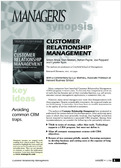Liberating the company: returns of experience

The notion of liberated company remains controversial: some see in it an ideal model, others a deception. In any event, it raises a key question: how can you combine individual autonomy and collective efficiency?
Many business leaders are wondering how to modernize their organization’s operations. Indeed, the hierarchical pyramid model inherited from the 20th century is showing its limits. In an age of mass production, it was effective to apply decisions taken centrally, in a relatively stable environment. But it is showing signs of weakness nowadays. It is ill adapted to the requirements for local reactivity and permanent innovation raised by the turbulence of the markets. Additionally, it does not answer well the new expectations of the staff. Showing dedication and discipline against the promise of a lifelong career has become obsolete: in order to engage, staff want to feel heard, to enjoy autonomy in action that gives meaning to their work and fosters their professional development.
New governance models, focused on staff autonomy, have thus emerged. One of the most accomplished—and of the most radical—is this of so-called “liberated” companies. The term was coined by Tom Peters in the 90’s. It is today relayed by professors and speakers such as Isaac Getz. It designates organizational models in which the weight of hierarchy and support functions is minimized, to give actors in the field—workers, engineers, salesforce, etc.—the greatest possible margin of maneuver. Some organizations have gone to the extent of completely suppressing hierarchy and support functions. Coordination takes place through dialogue between the field players, within a framework of rules collectively defined and regularly debated to be adjusted according to needs.
This model is viewed with envy by some and with skepticism by others. Beyond announcements and self-promotion, does it really keep its promise? Is the maximal autonomy of individuals compatible with the necessary discipline to guarantee performance, respect of the regulations and security? Doesn’t regulation by peers have perverse effects, potentially more destructive than the arbitrary nature of hierarchy? The study of recent returns of experience allows some really instructive light to be shed on these points.
In this synopsis:
– Feeding the dialogue on work standards
– Liberating the company: to what extent can we bypass the hierarchical framework?
– Clarifying the conditions for exercising autonomy
SubscriberSign in
to download
the synopse (8 p.)
VisitorI want to buy
this synopsis (8 p.)
VisitorI want
to subscribe
See also

Building a resilient brand
Some brands are capable of developing a type of resilience. Although they cannot avoid crises, they know how to bounce back in adversity thanks to their privileged relationship with a core set of loyal customers. How do they go about it?

